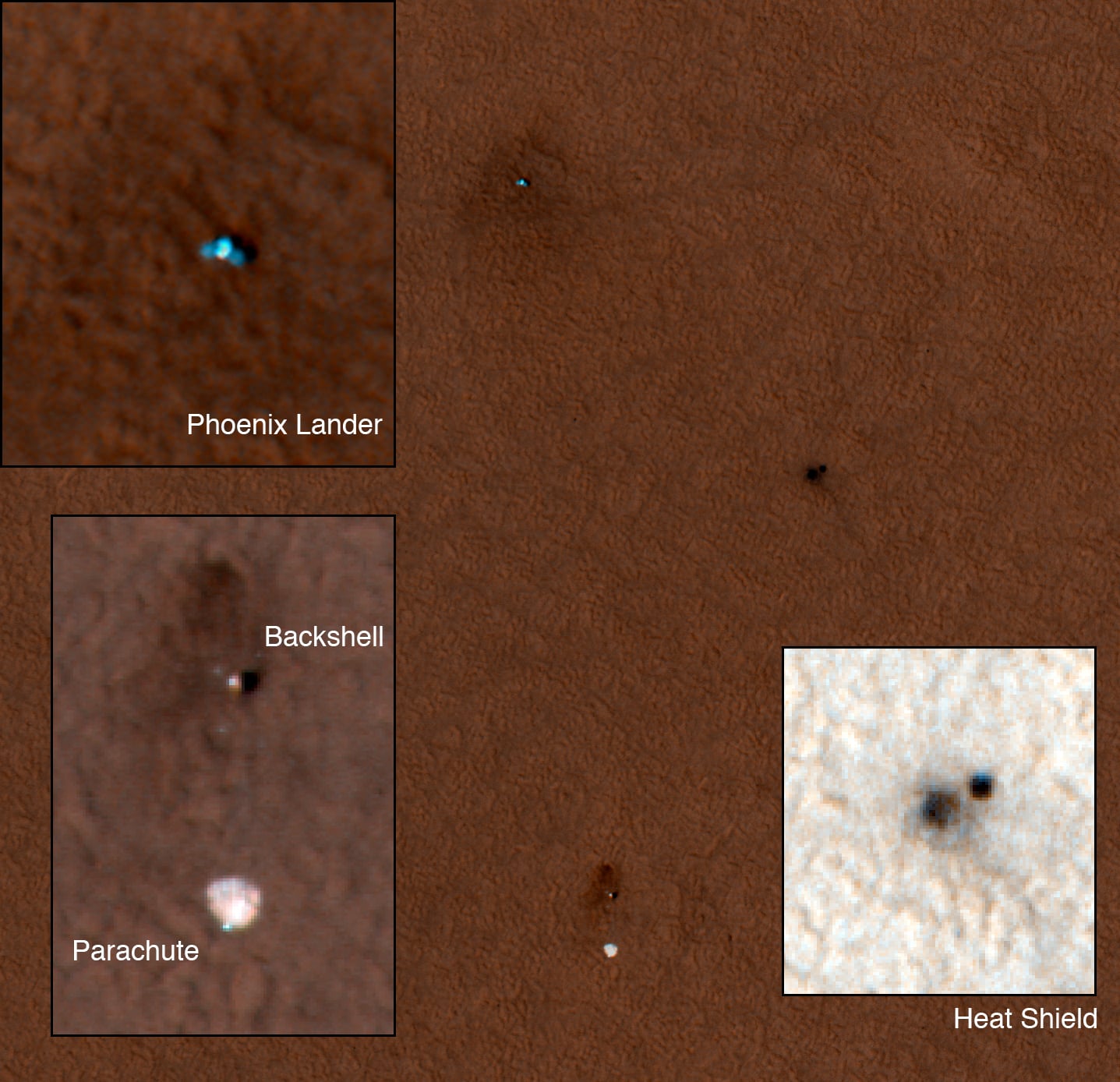The HiRISE Camera Imaging Team for the Mars Reconnaissance Orbiter keeps outdoing themselves. First, they imaged Mars' surface in such fine detail to help choose a safe yet interesting landing site for Phoenix. Then they beat the odds and actually captured
Phoenix during its descent
to Mars surface, which is completely incredible. And now, in very short order they've located and imaged Phoenix and all its accoutrements sitting on Mars north polar region. The parachute (lower left) is easy to identify because it is especially bright and the backshell is still attached to the parachute cords. The double dark marking at right is consistent with disturbance of the ground from impact and bouncing of the heat shield, which fell from a height of about 10 kilometers. The last object (upper left) is the Phoenix Lander whose two solar panels on either side of the lander are clearly visible.
To give you a sense of scale of what you're seeing, the solar panels are about 5.5 meters (about 18 feet) across, and about 22 pixels in this image. The parachute and lander are about 300 meters, roughly 1,000 feet, apart. All seen and imaged by MRO from orbit. Amazing.
I love HiRISE.
In other Phoenix news, the commands to activate the robotic arm will be sent Wednesday morning via communications with, appropriately enough, MRO.
See below for close-ups and the entire image without the inserts.
All these images were acquired about 22 hours after Phoenix landed at about 3:00PM local time on the surface. The rest of the HiRISE observation shows a cloud free day for Phoenix Lander operations.
Close up of the Phoenix lander.
Parachute and backshell.
Source:
HiRISE
 Universe Today
Universe Today
